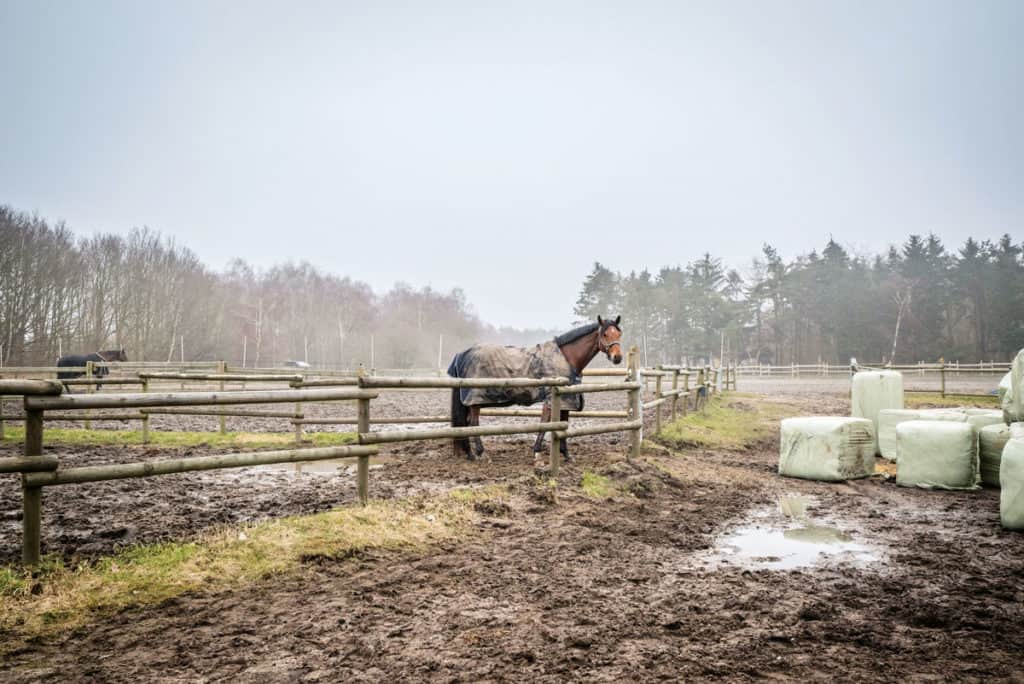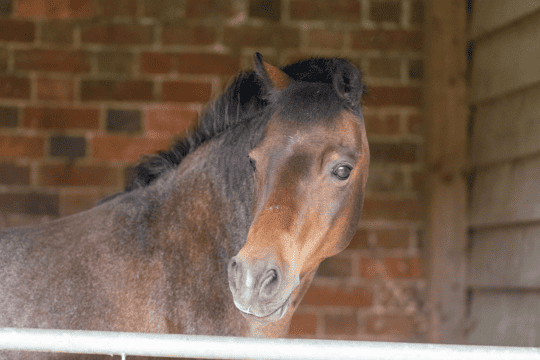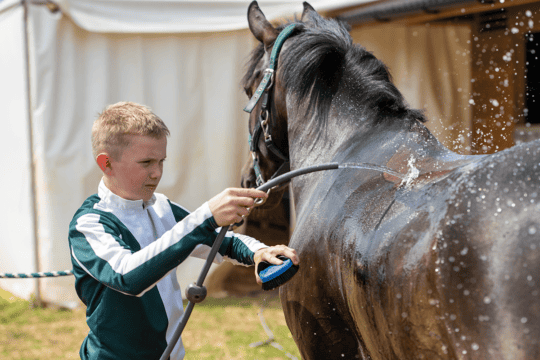
HomePony Know HowPony Care TipsHealthMud fever prevention plan
-
Pony Care Tips
Learn everything you need to know about caring for your fave pony. From feeding and grooming to mucking out – we have it all here!
-
Riding Tips
Improve your riding with our fab articles! Whether it's building your confidence, riding shapes, or jumping spreads that you need tips on, we have something for every rider.
Latest News
Mud fever prevention plan
Posted in Health
Worried about mud fever? Learn how to prevent it and protect your fave pony

Mud fever is a bacterial skin infection that can affect your pony’s heels and lower legs. It causes inflamed skin, swelling, scabbing and matted hair, and in particularly bad cases it can cause hair loss and lameness. Thick, crusty scabs will appear on his heels and lower legs, and there might be a yellow discharge produced from under these. It can be painful, so your pony might not like you touching the his legs.
Just like with everything else, prevention is better than cure, especially if you know your pony’s prone to mud fever. Follow these steps and handy tips to help keep your fave pony free from mud fever this winter.
Step 1 – Do daily checks
Look over and feel your pony’s legs every day. The bulbs of his heel are the most common place for mud fever to be found, but it can appear higher up his legs, too. Each time you pick out your pony’s feet is an ideal opportunity to check for any signs of infection. Remember, the sooner you spot any signs of mud fever the quicker it can be treated.
TOP TIP – Fence off very muddy areas of his field, or move fields regularly to stop your pony from standing all day in wet conditions.
Step 2 – Help him stay dry
If your pony comes in from the field with muddy legs, avoid washing them. Wait for the mud to dry, then use a soft brush to gently groom him. Although it’s tempting to wash mud off, over-washing or brushing will irritate his skin, making it more prone to developing mud fever. If you have to wash his legs, use an antibacterial shampoo and gently pat them dry with a clean towel afterwards.
Step 3 – Be boot savvy
Warm, damp conditions are perfect for bacteria to grow, so avoid putting boots on wet legs. If you’re planning to go for a hack on a route that is especially wet or muddy, think about whether he really needs to wear boots – he might be better without them.
Step 4 – Think about his diet
If you know your pony is prone to mud fever, consider feeding a supplement to encourage healthy skin.
Step 5 – Keep clean
Your grooming kit, boots and bandages are all perfect places for bacteria to live, so it’s important to keep them clean by washing them in an antibacterial wash or disinfectant. Avoid sharing grooming kits, because it can spread infection to other ponies.
Step 6 – Create a barrier
There are loads of turnout boots and wraps available that can help protect some ponies’ legs from wet and muddy conditions. Barrier creams can provide some protection to your pony’s legs, but remember that his legs must be clean and dry before applying the cream or you’ll be trapping the bacteria in, rather than keeping it out.
Step 7 – Make the best bed
Fill his stable with deep, clean bedding to help his legs dry quickly. A well-ventilated stable will speed up drying time, too.
Treatment tips
Despite your best efforts, mud fever can sometimes still get past your defences. If you see the signs, treat it as soon as possible to prevent it getting worse.
Keep his legs as clean and dry as you can to allow them to heal. You should also…
- remove any scabs – soak them in water to make them soft before gently picking them off
- wash his legs with an antibacterial wash, making sure to dry them thoroughly with a clean towel
- apply a topical treatment to help soothe the skin
- call your vet for advice if you’re unsure – they may need to visit your pony to assess his condition and he might need antibiotics to help clear the infection






















Leave a Reply
You must be logged in to post a comment.